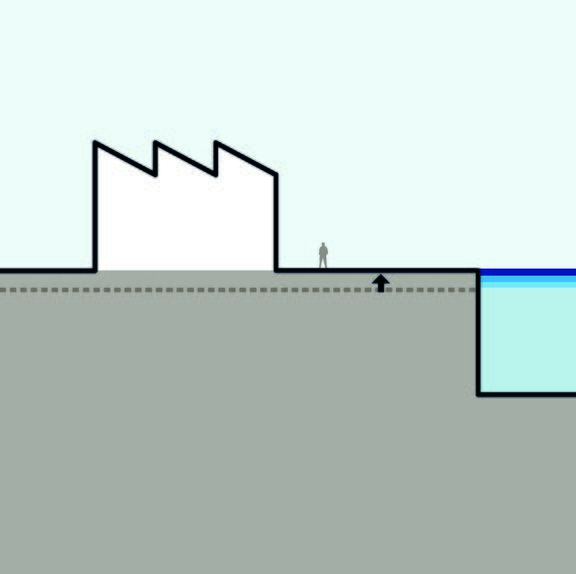Terrain and access roads elevation
Elevating terrains, access roads and other infrastructure minimises the risk of flooding when water levels are high. This keeps areas accessible. It also limits the consequences of flooding such as economic damage, casualties and chain effects on surrounding areas.
- Applicable to sites, infrastructure and equipment;
- Spatial adaptation;
- Permanent measure;
- Major investment;
- Prevents economic and environmental damage, and casualties;
- Applicable at all flood depths.

Elevating terrains is a good option for undeveloped port sites or plots of land where installations are being built or replaced. In the case of existing sites with complex and capital-intensive facilities, raising the ground level is less realistic because it involves the destruction of assets or high costs for the reconstruction of installations of this kind on higher ground. Terrain elevation is cost-effective in the case of investments in asset replacement or on a greenfield or when a piece of land is newly issued.
Terrain elevation and access roads
By elevating the terrain, you raise the site. Possible land subsidence in the future should be taken into account when determining the construction height. A raised area or major access road can be used as a place of refuge for workers and serve as part of an evacuation route during a flood. Good evacuation routes make it possible to manage a flood emergency better.
Back to the overview.
You can take these measures to improve your flood protection. The focus here is on generic descriptions of the measures in question. If you have questions about applying the measures on your site, please contact the Flood Risk Management Team.
No rights can be derived from the measures. See also the disclaimer.